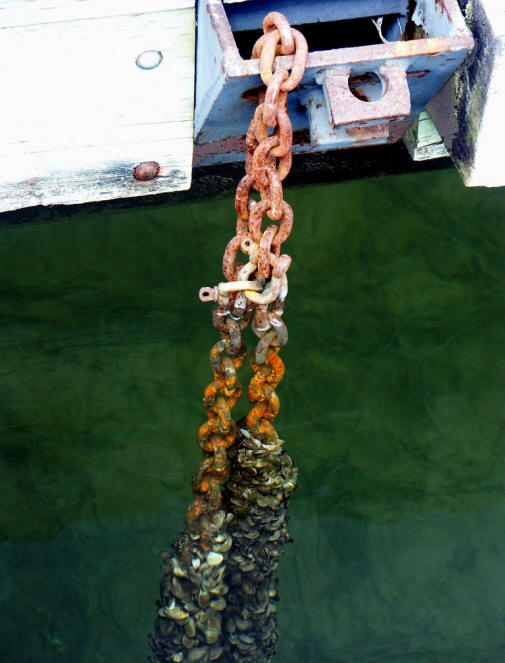Crevice Corrosion |

Biofouling is ubiquitous in the marine environment. There are two main categories of fouling:
noncalcareous (soft)
calcareous (hard)
Algae, slime and hydroids exemplify noncalcareous foulers. Examples of calcareous foulers, which form shells comprised of calcium carbonate, are barnacles, encrusting bryozoans, mollusks, tubeworms and zebra mussels.
Zebra mussels colonize pipes and constrict flow, therefore reducing the intake in heat exchangers, condensers, fire-fighting equipment, and air conditioning and cooling systems. Due to zebra mussel densities, the diameters of pipes have been reduced by two-thirds at water treatment facilities. Small mussels can get into engine cooling systems and cause overheating and damage. Navigational buoys have sunk under the weight of attached zebra mussels. Dock piling deterioration increases when encrusted with zebra mussels. Corrosion of steel and structural integrity of concrete can be affected by continued attachment of zebra mussels. (reference 69)
The buildup of a heavy layer of zebra mussels on a surface can produce anaerobic conditions at the substrate. Microbiologically induced corrosion (MIC) is caused by many types of anaerobic bacteria. Stainless steel weldments are particularly susceptible to MIC. Oxygen concentration cells may be caused by zebra mussel infestations. This effect will establish corrosion cells, which may accelerate corrosion of both coated and bare ferrous substrates.
 |